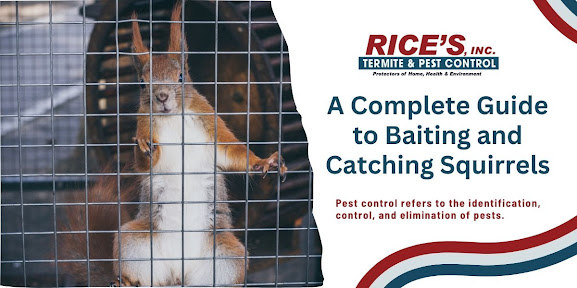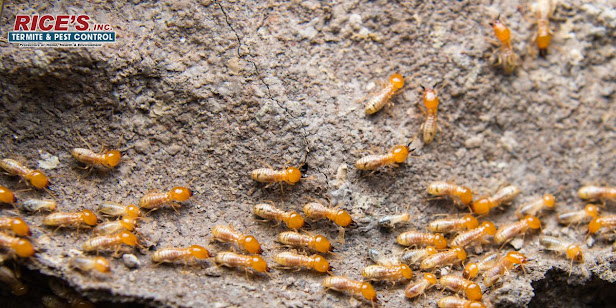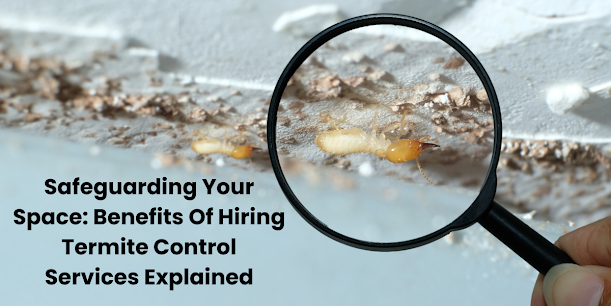Mastering Squirrel Trapping: A Complete Guide to Baiting and Catching Squirrels
Squirrels are known for their mischievous behavior. These small creatures are full of boundless energy and can create a big problem if they invade your personal space.
While it may seem like a funny sight to watch squirrels scamper around, their antics can disrupt your peace. If you're looking for a way to tackle this situation, you're at the right place. We'll delve into the ins and outs of squirrel trapping bait, offering tips and tricks to enhance your trapping success.
Thus, through our guide, we will equip you with the knowledge needed to outsmart these nimble creatures. Furthermore, investigating humane relocation methods ensures a compassionate approach, allowing you to coexist peacefully with the vibrant wildlife surrounding you.
Furthermore, by studying ways to humanely move animals, you are allowing everyone to be kind towards them. This helps you live peacefully with the lively wildlife around you.
Catching squirrels without causing harm requires insight into their behavior. These intelligent creatures have adapted to survive, making it crucial to understand their habits. Here are some quick tips to help you comprehend squirrel behavior:
Observe Their Movement Patterns
Squirrels follow predictable paths, especially during peak hours. This observation aids in strategically placing traps.
Identify Their Favorite Food Source
Nuts, seeds, and fruits are irresistible to squirrels. Using these preferred food sources as bait increases the chances of luring them into traps.
Watch for Signs of Activity
Footprints, scratch marks, or dropped items suggest a squirrel presence. Utilize these signs to locate and set traps effectively.
Know Their Habitats
Squirrels prefer areas with ample cover and easy access to food. This understanding assists in placing traps in optimal locations.
Thus, grasping squirrel behavior significantly improves your success in catching them without harm. Knowing their preferences is the first step to effective trapping.
Choosing the best bait for squirrel traps
Selecting the appropriate squirrel bait is vital for successful squirrel trapping. Consider these factors when choosing bait:
Nutty Delight
Opt for peanuts and walnuts, satisfying their love for nuts without causing harm.
Fruit Galore
Fresh fruits like apples and berries provide an irresistible, natural lure for squirrels.
Fruit Galore
Use these bait options moderately, and regularly check the cage trap to release captured squirrels promptly. Therefore, consider hiring professional and the best wildlife removal services or critter control in Maryland for comprehensive assistance. With their knowledge and expertise, you can find the best bait for squirrel traps.
Setting Up Effective Squirrel Traps
Once you've chosen the type of bait you want to use, it's time to set up your traps. There are many different types of squirrel traps available, ranging from simple box traps to more complex devices that use live bait. When selecting a trap, consider the following factors:
- Size: Make sure the trap is large enough to comfortably hold the size of the squirrel you're trying to catch. Smaller traps may be easier to set up and hide, but they may not be big enough to accommodate larger squirrels
- Material: Use a durable material, such as metal or plastic, to construct your trap. This will help ensure that the trap can withstand the weight of the squirrel and won't break or collapse under pressure.
- Design: Consider the design of the trap when selecting a device. Some traps have a trigger mechanism that closes the door when the squirrel enters the trap, while others require manual activation. Think about how you plan to set up and monitor the trap, and choose a design that fits your needs.
Tips for successful squirrel trapping bait
For a successful attempt to catch the squirrel, keep in mind the tips indicated below:
- Patience: Patience plays an important role in getting the squirrel trapped. You must let the trap remain in a certain place for a long time. Adjusting the position will only result in a delay in getting the squirrel trapped.
- Regular Checks: You need to keep a regular check on the trap to minimize the stress of their attempt to run away. This will further make you aware of other non-targeted animals in your home.
- Proper Disposal: When disposing, always follow ethical and legal guidelines. In case you want to relocate the squirrel, make sure to release them far from your location to prevent their return 2506
- Regular Checks: You need to keep a regular check on the trap to minimize the stress of their attempt to run away. This will further make you aware of other non-targeted animals in your home.
- Proper Disposal: When disposing, always follow ethical and legal guidelines. In case you want to relocate the squirrel, make sure to release them far from your location to prevent their return 2506
Hiring the Best Squirrel Trapping Bait Company
Choosing the right professional squirrel trapping company is essential to ensuring the humane and effective removal of squirrels from your property. Look for a company with extensive experience in wildlife removal services, particularly with squirrels. Also ensures that the company follows humane procedures, avoiding any harm to the animals. Always opt for a licensed and insured company to assure professionalism and accountability. Lastly, read their previous reviews; this will give you insight into the company’s reliability.
Invest wisely in a wildlife removal service that prioritizes your property and these furry creatures' well-being. Because choosing the best squirrel trapping bait company is what matters most!
Summing it Up!
Mastering squirrel trapping requires selecting the right traps, using attractive baits, and knowing how squirrels behave. By combining these factors, you can control squirrel populations in a humane and eco-friendly way.
Stay aware of local rules, check traps often, and approach trapping responsibly. With the right tools and knowledge, you can reclaim your space from these pests and bring balance back to your home or garden.



Comments
Post a Comment